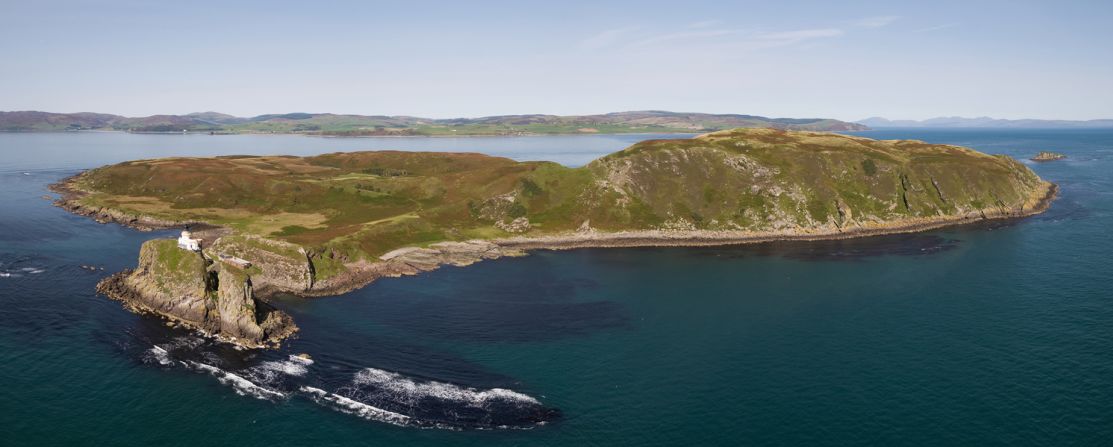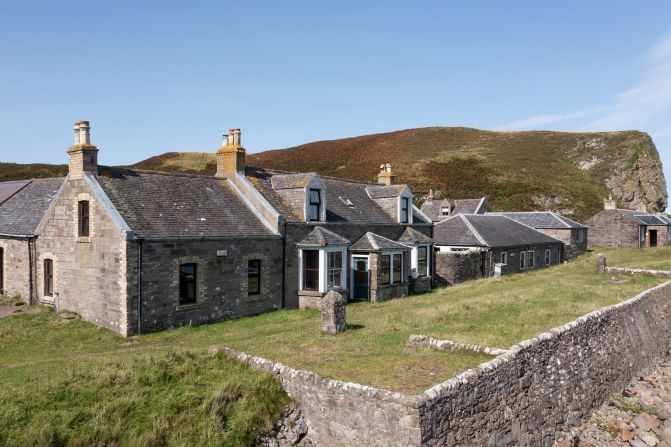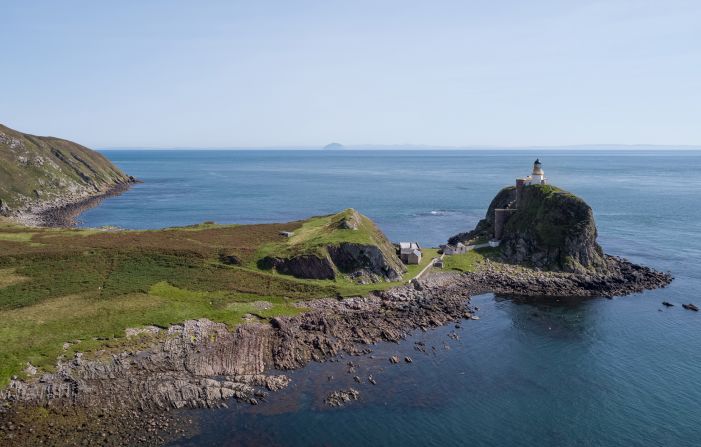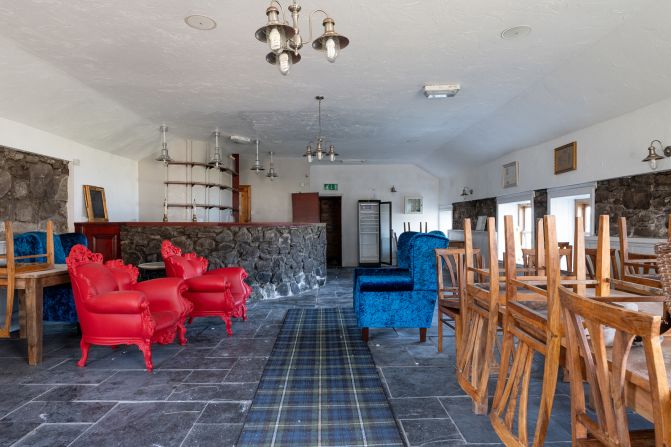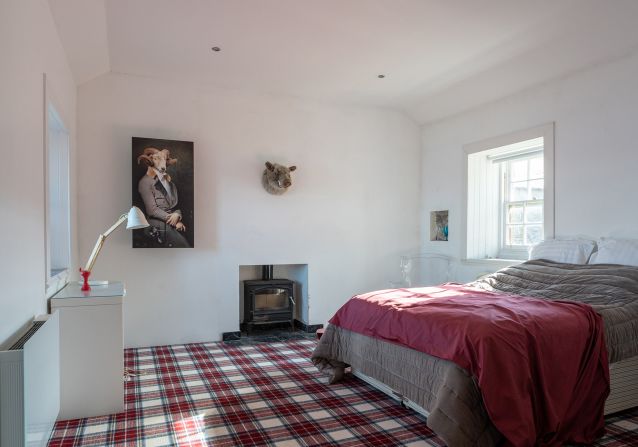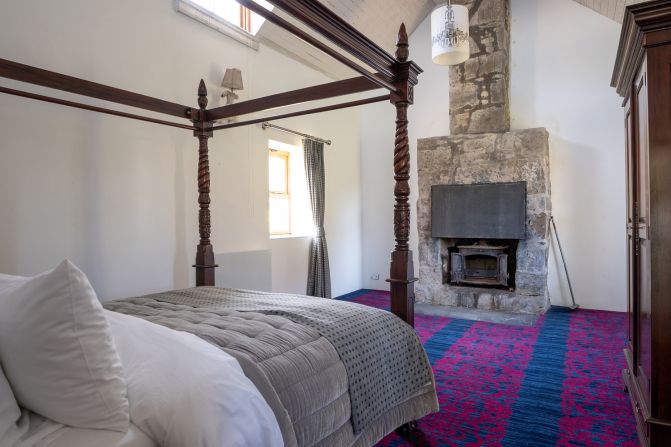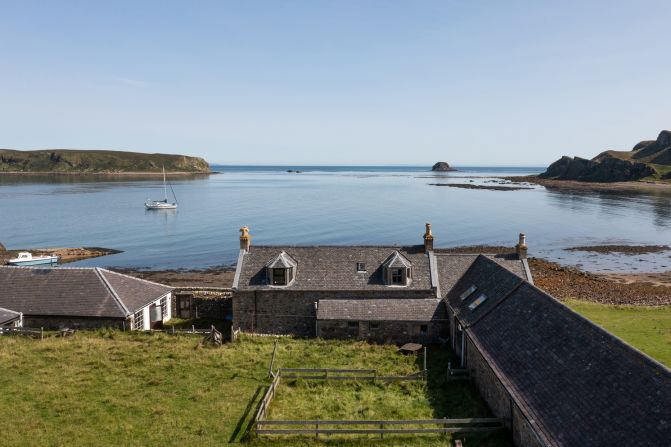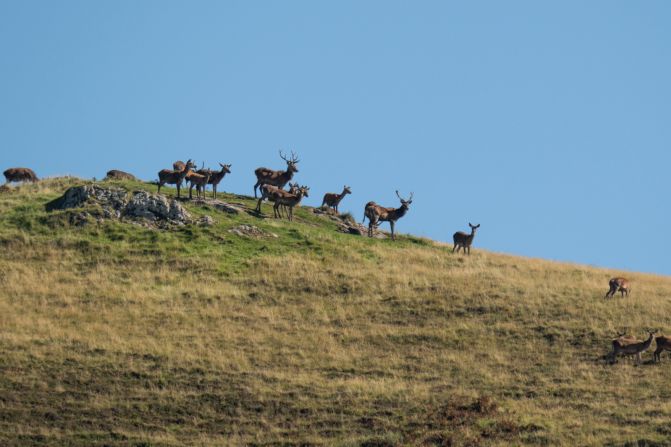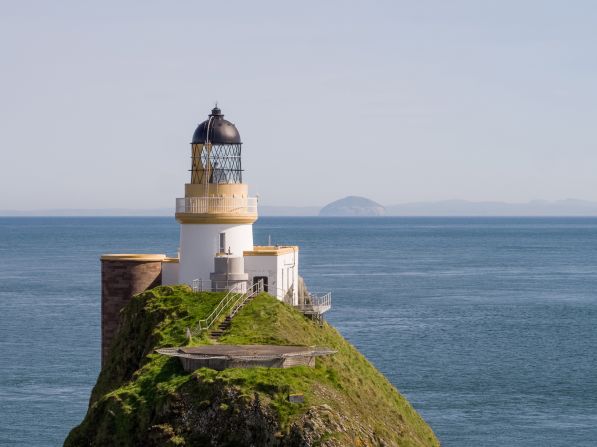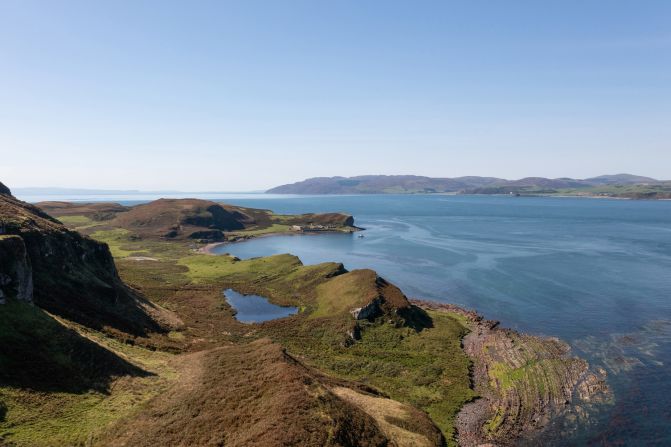Editor’s Note: Sign up for Unlocking the World, CNN Travel’s weekly newsletter. Get the latest news in aviation, food and drink, where to stay and other travel developments.
An idyllic 453-acre private island is up for sale off the west coast of Scotland and it comes with sandy beaches, puffins galore, seven houses, a pub, a helipad and a flock of black-faced sheep.
Sanda Island lies between Scotland and Northern Ireland, off the southern tip of the Kintyre Peninsula, made famous by the 1977 song “Mull of Kintyre” by Paul McCartney and Wings.
Over the years, it’s had historical connections with monks, saints and kings. It was visited by Scottish King Robert the Bruce and Norway’s King Hacon and its chapel has associations with Saint Columba and Saint Ninian. The island has had numerous owners over the years, but the most famous is Jack Bruce from the rock band Cream.
Access to the island is by boat – there are stone slipways at both ends – or by helicopter. There, amongst the rolling bucolic greenery edged by rock escarpment, are seven residential properties – four at the northern end and three at the southern, right next to a picturesque lighthouse perched on an outcrop.
The accommodation can host up to 26 people, which is enough for a small crowd at the Byron Darnton Tavern, named after a ship that wrecked off the island in 1946. It was established in 2003 by previous owners Dick and Meg Gannon and for a number of years served customers arriving by boat, but closed after the island was bought in 2010 by Swiss businessman Michi Meier.
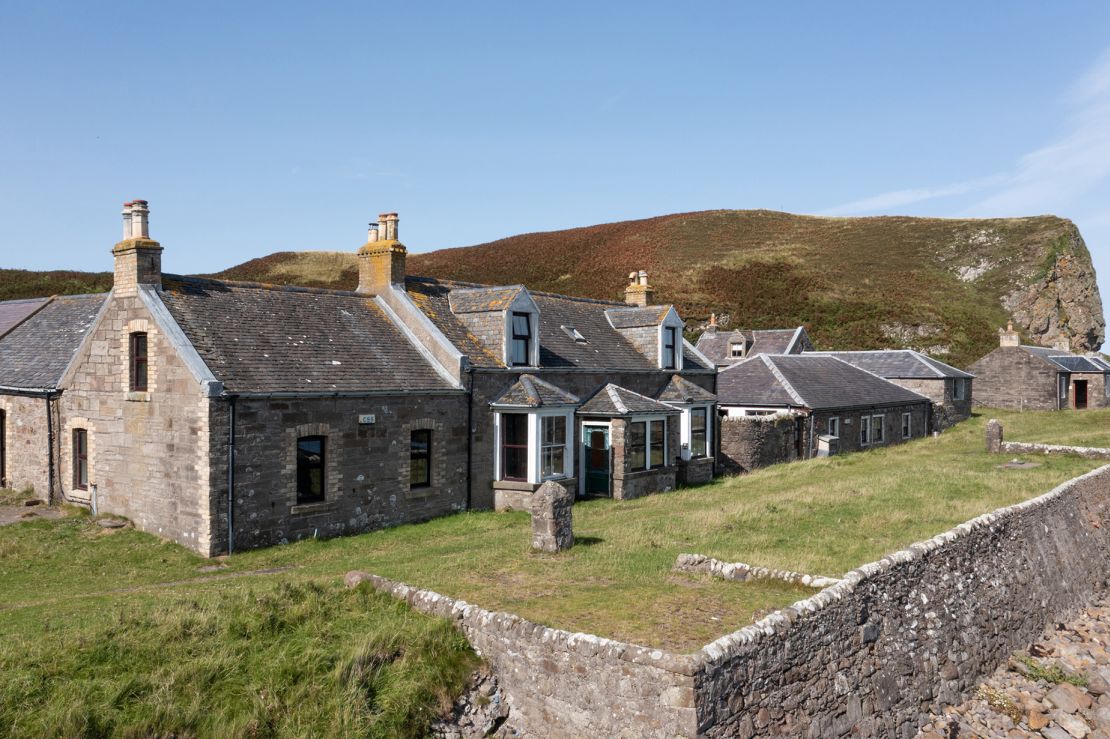
A pub of one’s own
The pub “got a lot of press coverage and was open during the summer months,” explains Tom Stewart-Moore, head of rural agency for Scotland at Knight Frank, the agency handling the sale. “For the next owner it offers an opportunity to keep the property either as their own private getaway, or to diversify and extract some money through offering exclusive use, unique stays with high-end accommodation. There is also the option of reopening the pub to offer something for people sailing up and down the West Coast.”
It still has an alcohol license, should the next owners wish to revive the tavern, and it has a registered farm code too. The island previously had a small farm and a flock of 55 black-faced sheep still call the island home. “The sheep look after themselves, they’re the island lawn mower and require little management,” says Stewart-Moore. “They are included as part of the sale.”
There’s wildlife as well as livestock: Bird-watchers can delight in the colonies of puffins, kittiwakes, cormorants, shags, razorbills and many more feathered residents.
If the whole thing wasn’t charming enough, Sanda is also known locally in Argyll and Bute as “Spoon Island,” due to its resemblance to an upturned spoon. It’s also one of a few Scottish islands to print its own stamps.
The island is 23 meters tall (75 feet) at its highest point and on a clear day you can see Northern Ireland’s Antrim Hills, some 20 miles away across the North Channel. Campbelltown, in Scotland, is the main access to the island by boat, and has a large marina, several whisky distilleries and Scotland’s oldest cinema.
The money bit
Knight Frank says the vendor is looking for offers in excess of £2.5 million ($3.1 million). A couple of extra islands are being thrown into the sale too: 31.72-acre Sheep Island and itty bitty Glunimore Island (4.41 acres).
Most of the accommodation on the island is recently refurbished, with new double glazing added. “Energy is currently generated on the island by three generators,” says Stewart-Moore. “however there is the opportunity for the next owners to explore renewable energy sources to supplement or enhance the electricity on the island.”
He says they’ve already received “a large number of viewing requests.” As for the profile of the kind of people who can throw a few million at an island purchase, Stewart-Moore says, “The potential buyers will predominantly fall into two categories; either a wealthy individual will purchase it to use for themselves and keep private. Or it will be someone who will look to commercialize the pub and the buildings, enhance or increase the farming operation over the ground and potentially go down the route of being self-sufficient.”
If this year has you yearning to tend your sheep and go off-grid, start checking the back of the sofa for pennies. The island of Sanda is waiting.

